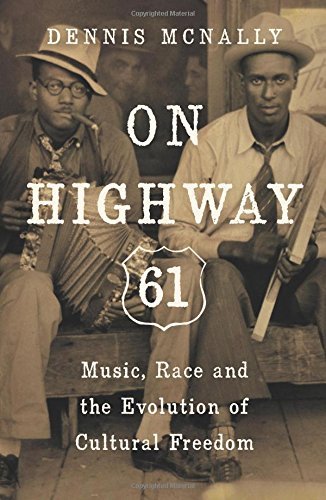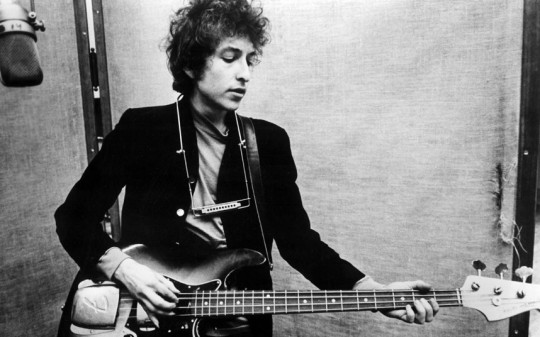
The musicians and writers whose art presaged and influenced and influenced The Sixties.
By Michael Goldberg.
On Highway 61 – Music, Race and the Evolution of Cultural Freedom, Dennis McNally, Counterpoint Press (471 pages)
Let me start at the end and tell you that the final section of On Highway 61, some 120 pages, provides the best portrait of Bob Dylan and his creativity, what nurtured it, and how it evolved, that I’ve read to date.
Additionally, author Dennis McNally focuses on how Dylan’s worldview – and the songs he wrote and/or sung – can be characterized as part of the ongoing search for freedom in all it’s manifestations, physical, spiritual and cultural. And more. Dylan was at least as influenced by the music made by African Americans, as he was by white country and folk musicians. And this is important, as it is simply one of many examples in this terrific book that make the case that African Americans are primarily responsible for what is truly great in American music.
But there are other reasons it’s appropriate to start with Dylan. Like some of that artist’s surrealist (or perhaps hyper-real) songs of 1965 – “Desolation Row,” “Ballad of a Thin Man” and “Bob Dylan’s 115th Dream” — McNally has populated his book with an incredible array of iconic figures — including Henry David Thoreau, Miles Davis, Mark Twain, Bessie Smith and Jack Kerouac – who, like Dylan, have allowed those who have paid attention to their art to experience, as McNally puts it, “a widening of vision, a softening of the heart, and an increase in tolerance.”
No Anita Ekberg (“to make the country grow”)) and no Shakespeare (“with his pointed shoes and his bells”), but what the hell. As artfully as Dylan in his songs, McNally has made his superhuman crew fit seamlessly into this treatise on cultural freedom. In fact, those artists and their work is the story of cultural freedom.
And what is cultural freedom?

Leave it to Mr. Dylan, who McNally quotes from a 1987 US magazine interview, to give us a clue.
“When I first heard Elvis’s voice I just knew that I wasn’t going to work for anybody and nobody was gonna be my boss,” Dylan said. “Hearing him for the first time was like busting out of jail.”
Art that makes you feel like busting out of jail. That would be one definition.
Or, as Dylan sang it, “I ain’t gonna work on Maggie’s farm no more.”
Yeah, cultural freedom.
But there’s more to it…
Read the rest of this review at Addicted To Noise AU.
-– A Days of the Crazy-Wild blog post: sounds, visuals and/or news –-
—
[I published my novel, True Love Scars, in August of 2014.” Rolling Stone has a great review of my book. Read it here. And Doom & Gloom From The Tomb ran this review which I dig. There’s info about True Love Scars here.]